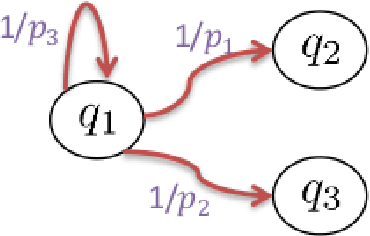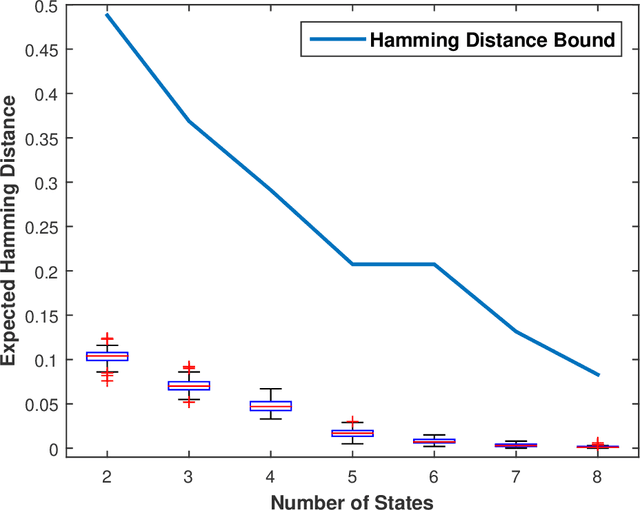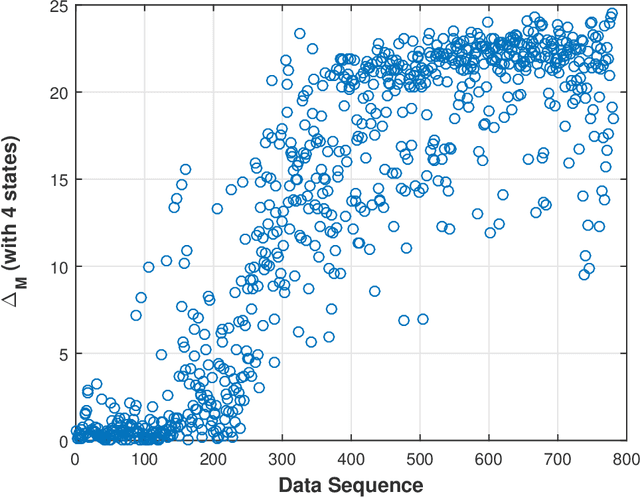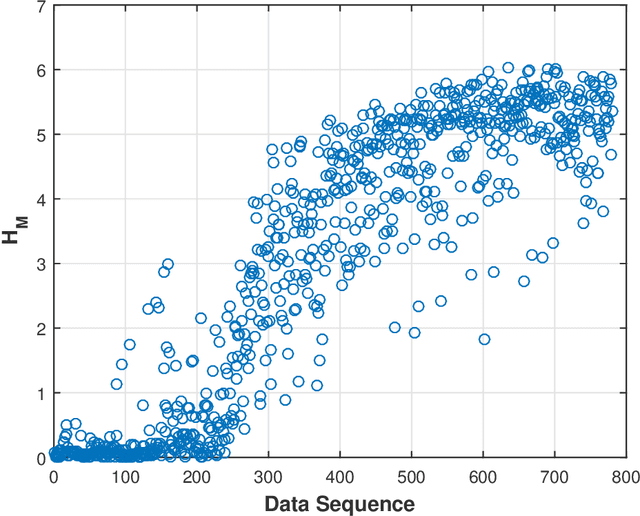Abhishek Srivastav
GE Global Research
Symbolic Analysis-based Reduced Order Markov Modeling of Time Series Data
Sep 26, 2017



Abstract:This paper presents a technique for reduced-order Markov modeling for compact representation of time-series data. In this work, symbolic dynamics-based tools have been used to infer an approximate generative Markov model. The time-series data are first symbolized by partitioning the continuous measurement space of the signal and then, the discrete sequential data are modeled using symbolic dynamics. In the proposed approach, the size of temporal memory of the symbol sequence is estimated from spectral properties of the resulting stochastic matrix corresponding to a first-order Markov model of the symbol sequence. Then, hierarchical clustering is used to represent the states of the corresponding full-state Markov model to construct a reduced-order or size Markov model with a non-deterministic algebraic structure. Subsequently, the parameters of the reduced-order Markov model are identified from the original model by making use of a Bayesian inference rule. The final model is selected using information-theoretic criteria. The proposed concept is elucidated and validated on two different data sets as examples. The first example analyzes a set of pressure data from a swirl-stabilized combustor, where controlled protocols are used to induce flame instabilities. Variations in the complexity of the derived Markov model represent how the system operating condition changes from a stable to an unstable combustion regime. In the second example, the data set is taken from NASA's data repository for prognostics of bearings on rotating shafts. We show that, even with a very small state-space, the reduced-order models are able to achieve comparable performance and that the proposed approach provides flexibility in the selection of a final model for representation and learning.
A textual transform of multivariate time-series for prognostics
Sep 19, 2017



Abstract:Prognostics or early detection of incipient faults is an important industrial challenge for condition-based and preventive maintenance. Physics-based approaches to modeling fault progression are infeasible due to multiple interacting components, uncontrolled environmental factors and observability constraints. Moreover, such approaches to prognostics do not generalize to new domains. Consequently, domain-agnostic data-driven machine learning approaches to prognostics are desirable. Damage progression is a path-dependent process and explicitly modeling the temporal patterns is critical for accurate estimation of both the current damage state and its progression leading to total failure. In this paper, we present a novel data-driven approach to prognostics that employs a novel textual representation of multivariate temporal sensor observations for predicting the future health state of the monitored equipment early in its life. This representation enables us to utilize well-understood concepts from text-mining for modeling, prediction and understanding distress patterns in a domain agnostic way. The approach has been deployed and successfully tested on large scale multivariate time-series data from commercial aircraft engines. We report experiments on well-known publicly available benchmark datasets and simulation datasets. The proposed approach is shown to be superior in terms of prediction accuracy, lead time to prediction and interpretability.
 Add to Chrome
Add to Chrome Add to Firefox
Add to Firefox Add to Edge
Add to Edge